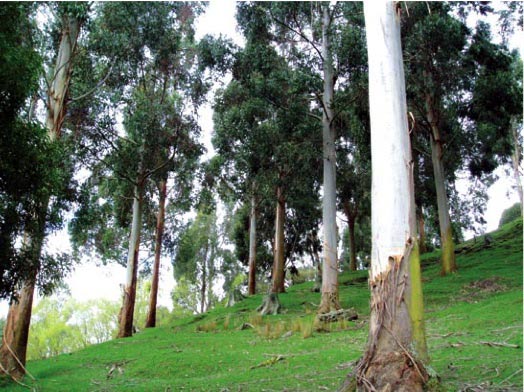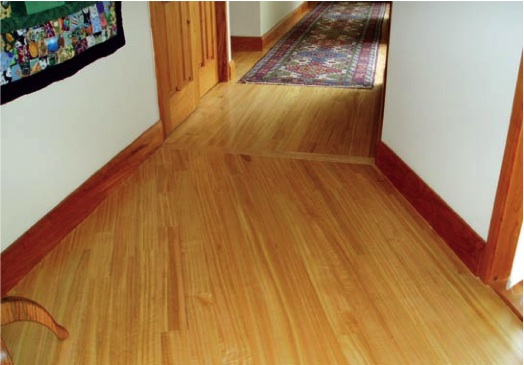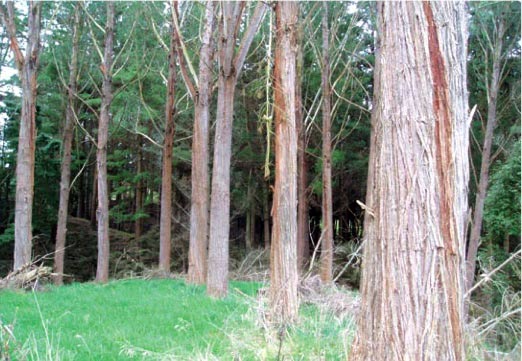Eucalypts for timber: My experience and my floor
Don Tantrum, New Zealand Tree Grower November 2006.
I began planting eucalypts about 30 years ago. I soon discovered that not all I wished to grow did grow. The Taihape climate soon curbed my enthusiasm. I will not tell you about the failures, only what has done well.
E. regnans has performed best. It has good form and growth rate and the trees look magnificent. E. delegatensis has good growth rate but the form is not as good as E. regnans. E. fastigata, E. fraxinoides and E. globulus have good form but a slower growth rate. E. muelleriana is slower and more difficult to establish whereas E. nitens grows like a weed.

Using E. regnans for flooring
There are plenty of negative comments about the timber performance of these trees. Recently we built a new house and I thought it would be nice to use E. regnans for some of our flooring. I spoke with Richard Davies-Colley, and under his instructions now have a beautiful E. regnans floor.
I milled one 24-year-old tree with a seven metre pruned butt and a 70 cm small end diameter. This I then quarter-sawed into 100 mm by 18 mm boards and air dried slowly for 18 months. There was some washboarding with shrinkage but almost no internal checking.

However I cut some larger dimensions at the same time and there was internal checking in these.
The flooring was then roughly dressed and re-stacked in our garage where there is fire used for our under-floor heating system.
After six months the wood was machined to final dimensions and returned to the garage until laid on the floor. It has now been down for a year, glued to the concrete, and has not been affected by the under-floor heating. The finished product is magnificent and we have received many favourable comments. I now know why its common name is Tasmanian oak as it is indeed very like oak.
Other thoughts on using eucalypt timber
My experience with all eucalypt timber is that once it is dry, and I mean dry, it becomes stable. If you are not sure how dry your timber is, then stand a piece next to your log fire and if it moves then it is not dry.

I also have some E. delegatensis I would like to harvest along with a pine block. I was told by my log marketer it was only suitable for firewood because the only market was for pulp, and the cost of getting it to the mill would give a nil return. I have milled a couple of the trees to see how the timber performs. I am very pleased so far as there is less shrinkage and checking than in the E.regnans.
I have found that, if you mill in winter, it is much easier to slow the drying process. This is very important. Some of the timber has been seasoned with excellent results and some has been used green for rails under covered yards.
I could rave a lot more about the attributes of E.regnans and E. delegatensis but there is no point because no matter how good it is there does not seem to be a market for these home grown eucalypts.
I think I know how to grow and mill it, but would it not it be great to be able to sell some?
I was wondering if a colder climate had any effect on timber quality of the ash group eucalypts. Does anybody have any theories on this?

 Farm Forestry New Zealand
Farm Forestry New Zealand